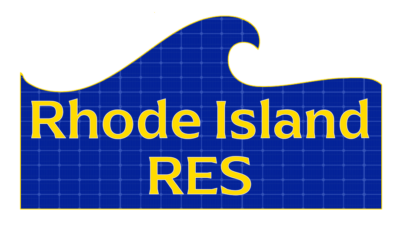The Renewable Energy Act (810-RICR-40-05-2) enacted on June 29, 2004, implemented a renewable energy standard in Rhode Island. The Act requires retail electricity providers including non-regulated power producers and distribution companies to supply 100% of their retail electricity sales from renewable resources by 2033. The requirement began at 3% by the end of 2007, with increases of an additional 0.5% per year through 2010, an additional 1% per year from 2011 through 2014, and an additional 1.5% per year from 2015 through 2022. S.B. 2774 enacted in June 2022, increases annual percentages to reach the 100% of retail electricity sales from renewable resources target by 2033 and each year thereafter. Annual percentage increases are as follows:
- An additional 4% of retail electricity sales in 2023
- An additional 5% of retail electricity sales in 2024
- An additional 6% of retail electricity sales in 2025
- An additional 7% of retail electricity sales in 2026 and 2027
- An additional 7.5% of retail electricity sales in 2028
- An additional 8% of retail electricity sales in 2029
- An additional 8.5% of retail electricity sales in 2030
- An additional 9% of retail electricity sales in 2031
- An additional 9.5% of retail electricity sales in 2032 and 2033
The table below shows annual target percentages with the minimum percentages that can be from new or existing renewable energy resources:
| Compliance Year | Total Target Percentage | Minimum percentage from New Renewable Energy Resources | Percentage from either Existing or New Renewable Energy Resources |
| 2020 | 16.00% | 14.00% | 2.00% |
| 2021 | 17.50% | 15.50% | 2.00% |
| 2022 | 19.00% | 17.00% | 2.00% |
| 2023 | 23.00% | 21.00% | 2.00% |
| 2024 | 28.00% | 26.00% | 2.00% |
| 2025 | 34.00% | 32.00% | 2.00% |
| 2026 | 41.00% | 39.00% | 2.00% |
| 2027 | 48.00% | 46.00% | 2.00% |
| 2028 | 55.50% | 53.50% | 2.00% |
| 2029 | 63.50% | 61.50% | 2.00% |
| 2030 | 72.00% | 70.00% | 2.00% |
| 2031 | 81.00% | 79.00% | 2.00% |
| 2032 | 90.50% | 88.50% | 2.00% |
| 2033 & Future Years | 100.00% | 98.00% | 2.00% |
Eligible Renewable Resources Include:
- Direct solar radiation
- Wind
- Movement or the latent heat of the ocean
- The earth’s heat
- Hydroelectric facilities of less than 30 megawatts (MW) in capacity
- Biomass facilities using eligible biomass fuels and maintaining compliance with current air permits (eligible biomass fuels may be co-fired with fossil fuels, provided that only the renewable-energy portion of production from multi-fuel facilities will be considered eligible)
- Fuel cells using renewable resource
Program Administrator
The Rhode Island PUC has retained InClime, Inc. as the Program Administrator to perform the administrative functions of the RES Program. The Program Administrator reports directly to and acts under the direction of the PUC. Responsibilities of the Program Administrator include qualifying renewable energy systems and verifying distribution companies’ and competitive electric suppliers’ compliance with the Act.




